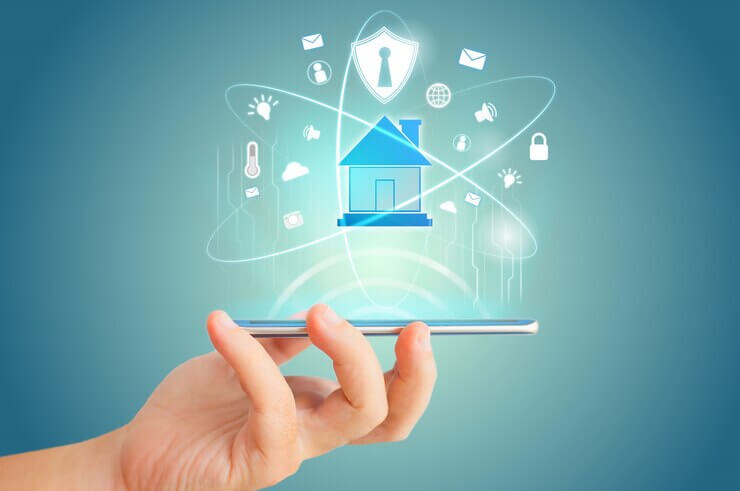5 Simple Tips On How to Wire a Smart Home
If you've been scouring the web for hours searching for information on how to wire a smart home, we've got you covered.
A home automation Wiring system allows pairing various wires you use in your home automation into a single platform. This allows for the connectivity of many different smart devices systems and sensors in your smart home, as well as the ability to add more wiring at a later date if desired.
Wiring a smart home is compatible with current technology and future home automation innovations.
Keen home wiring may be a great investment on the off chance that you just need to appreciate your shrewd home's benefits. The starting taking a toll can be significant, but the benefits surpass the costs, especially on the off chance that you simply are smart-wiring a modern domestic and dodging the additional taken toll of opening dividers. At some point as of late giving tips about how to wire your keen domestic, let’s see which shrewd machines require wiring to start with off.
Which smart home devices will require wiring?
A few savvy home gadgets are cordless, but others require a physical association. Not all of the gadgets that you simply control utilizing your smart home are brilliantly in and of themselves. For this case, your discussed conditioner or ice chest may be conventional gadgets with manual controls.

You would want to include these in your smart system by connecting them to your smart controllers using home automation wiring.
Other popularly included devices that work best when wired are:Smart light switches
Light switches, like smart thermostats, control standard hardware such as lights and light fittings. In spite of the fact that you can automate and control smart lights remotely, they are ordinarily as it were available in a limited number of sizes, and they may not fit in all of your home's lighting fixtures.
You can connect and control your smart light switch via wires, but it can also connect remotely to your hub.
Smart smoke detectors
Because this safety technology is essential, it should have two interconnected transmission connections, both wired and wireless, and backup batteries.
Smart Doorbell
Security is one of the primary reasons for having a smart doorbell; you might not want to rely solely on batteries. Ensure your safety by wiring the doorbell to your home automation power source and using backup power such as batteries.
Smart Outlets
A smart outlet switches any gadget into a smart device merely by hooking it in. Smart outlets regulate the flow of power to devices, so even if you control them wirelessly, you still must wire them into your electrical system.
How to Wire Smart Homes
Smart wiring in your residence during construction and renovations is much lower than the cost of refitting Smart Wiring in an already existing house.
You might be tempted to take on this project solo, but it's worth the time and money to enlist the help of an electrician. Not only are they experts in wiring, but they can also ensure that you don't accidentally install anything incorrectly or overload circuits. They'll often have a better selection of equipment, too.
If you're still set on doing this yourself, here are some general guidelines for installing your wiring. A point to ponder
Select a Central Place
Pick a convenient central area in your house that is simple to use, situated over the basement through which wires can run by.
Your control area must have plenty of power outlets for hooking in your equipment. If your space does not have multiple outlets, ensure to install them prior to the wiring process of your smart home.
Wiring Electrical
Install neutral wires in all junction boxes. Although most technicians do it as a good gesture, stating your desire ensures that a neutral wire is always accessible. Most powerline intelligent home devices require neutral wires.
Suppose you intend to install upgraded smart switches, dimmers, or keypads in your home. In that case, you must have neutral wires available because these demand a three-wire connection. Deep junction boxes give you more working space to accommodate deeper in-wall devices making your life easier.
Install Conduits
If you are planning for wiring of any kind, ensure to install cable conduits. You should install the conduits in walls even though you do not intend to use them right away. Furthermore, it's easier to set up conduits during construction than to start fishing speaker cables through a wall after completing your home automation.
Connect your conduits to wall sockets and cover them with wall brackets until you intend to use them. To cater to a touch panel, set up at least one circuit and junction box at head level in each room.
Closet Wiring
Construct a small, centralized closet to house media servers, patch panels, and distribution panels. Because most of your wiring will discontinue here, ensure your wiring closet is big enough to contain the wires with extra room for movement. Also, make sure you have plenty of cable transmission lines in this space.
Speakers
Even if you don't intend to install an audio system in the whole house right away, consider planning for one in the future by wiring every room for in-wall or in-ceiling. You will have made your work very easy when installing speakers in the whole house.
Conclusion
Wireless technology is fantastic. It provides flexibility and the ability to outfit your home with advanced features without the need for running wires. On the other hand, wireless connections are not as strong as wired connections. It is essential to know how to wire a smart home because running cables to as many gadgets allows data to be transmitted quickly and accurately. Although we live in a wireless world, wired home automation is the way to go.